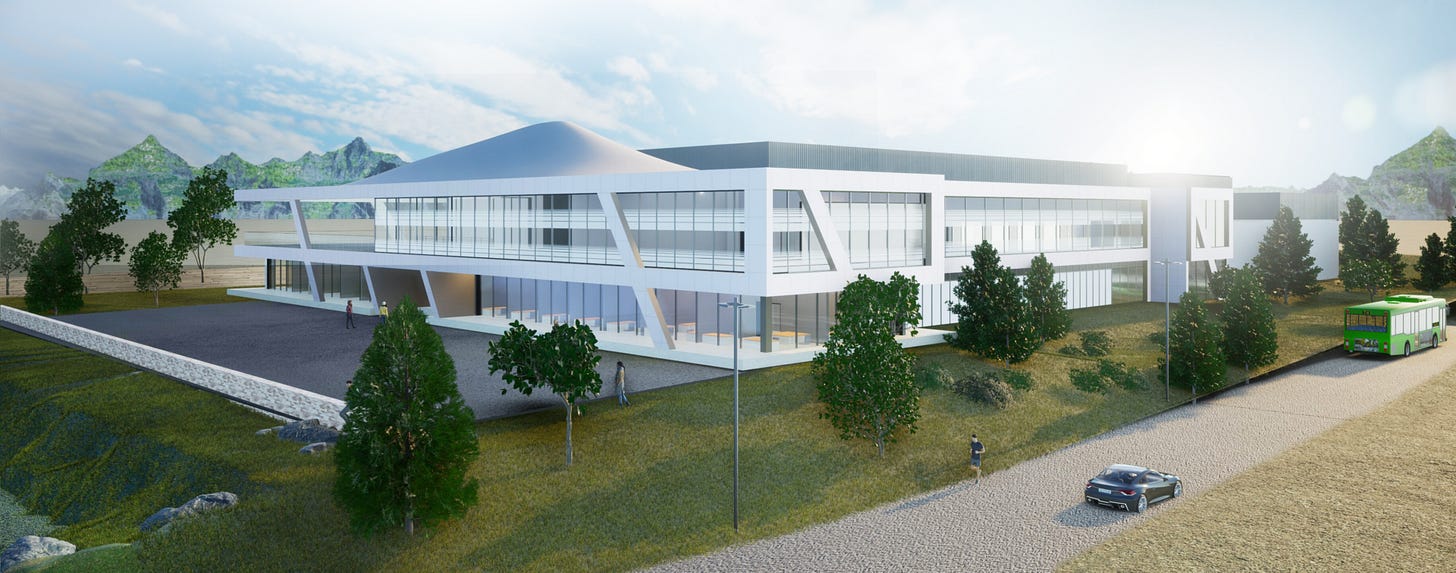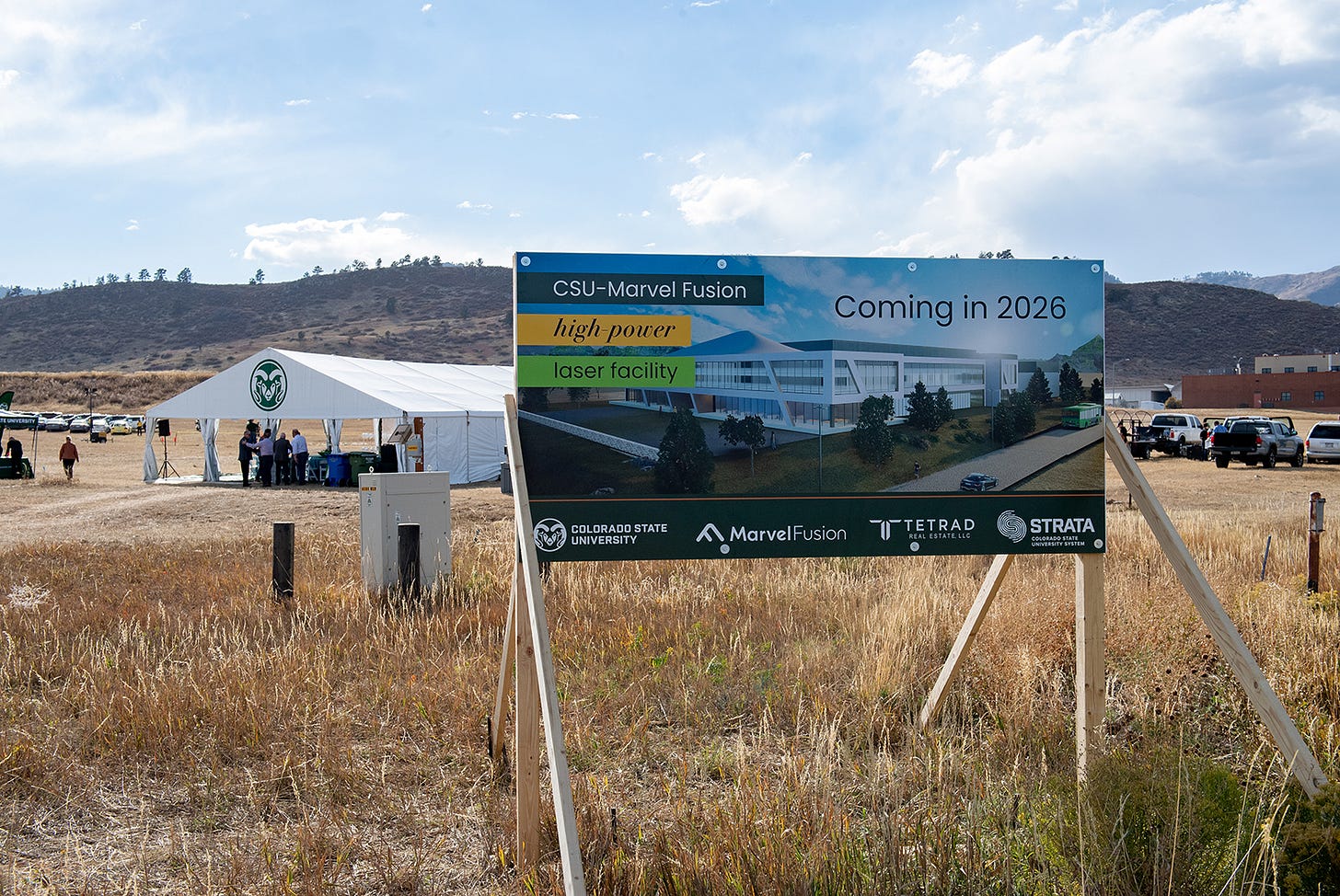Colorado State University Breaks Ground on ATLAS Laser Facility
CSU's new ATLAS facility will explore laser-driven fusion, offering promise for sustainable energy and cutting-edge scientific research.
AT A GLANCE
ATLAS aims to achieve laser-driven fusion, offering a potential path to sustainable, carbon-free energy.
The $150 million project is a collaboration between CSU, Marvel Fusion, and the U.S. Department of Energy.
The facility will generate 7 petawatts of power, targeting fusion energy applications and other research areas.
CSU’s existing and new laser research facilities will be collectively known as the ALEPH Center.
The project will provide hands-on learning opportunities for students and support interdisciplinary research beyond fusion.
Construction is set to begin this month on the Advanced Technology Lasers for Applications and Science (ATLAS) Facility at Colorado State University’s Foothills Campus. Scheduled for completion by mid-2026, the facility results from 40 years of laser research at CSU in collaboration with the U.S. Department of Energy’s Fusion Energy Sciences program and a $150 million public-private partnership with Marvel Fusion, launched in 2023

Focus on Laser-Driven Fusion
The ATLAS Facility will advance laser-driven fusion, a method that aims to replicate the energy generation process of the sun by fusing atomic nuclei together. If successful, this technology could provide a nearly limitless, sustainable source of carbon-free energy. The facility will house an upgraded version of CSU’s existing ultrahigh-power laser, complemented by two additional lasers supplied by Marvel Fusion. Together, these lasers will focus nearly 7 petawatts of power—over 5,000 times the U.S.'s electrical capacity—on a target the width of a human hair for about 100 quadrillionths of a second.
Expanding CSU’s Laser Research Capabilities
The addition of the ATLAS Facility represents a significant expansion of CSU’s existing laser research infrastructure. It will be located near current laser research buildings, adding new laboratories and office spaces. The facility will support a wide range of interdisciplinary research, including studies in fundamental science, medicine, and materials engineering.
Key Players and Funding
CSU President Amy Parsons and U.S. Department of Energy representatives recently held a groundbreaking ceremony for the new facility. The DOE has been a significant partner, awarding CSU $12.5 million through its LaserNetUS program and an additional $16 million to establish an Inertial Fusion Science and Technology hub. This funding supports upgrades to the existing ALEPH laser and allows outside researchers to access the facilities for fusion-related and other scientific studies

Exploring Beyond Fusion
The ATLAS Facility’s research won’t be limited to fusion energy. The lasers can also be used independently to explore areas such as cancer treatment, microchip lithography, and detailed X-ray imaging. For instance, lasers could precisely deposit energy for targeted tumor treatments or improve the manufacturing process for semiconductors.
Building the ATLAS Facility
The 71,000-square-foot facility will feature clean rooms and specialized infrastructure, including thick concrete walls for shielding and a vibration-isolated slab to maintain laser precision. Construction is being managed by Tetrad Corporation, with McCarthy Building Companies, Inc. as the general contractor and SWBR handling the design. The U.S. government, CSU, and Marvel Fusion are co-funding the project, which has also received substantial private and public investment

CSU’s History of Laser Innovation
CSU's leadership in laser research, spearheaded by Professors Jorge Rocca and Carmen Menoni, has been key to attracting partners like Marvel Fusion. Both professors are known for their interdisciplinary research and contributions to CSU’s reputation in laser technology. This new facility is seen as a natural evolution of decades of research, positioning CSU at the forefront of laser-driven fusion and other high-intensity laser applications.
Educational and Workforce Development Impact
The facility will play a vital role in training the next generation of fusion researchers and technicians. CSU aims to provide hands-on experience with cutting-edge technology to its students, addressing the growing demand for skilled professionals in the fusion industry. This aligns with the university’s land-grant mission to support STEM workforce development.




